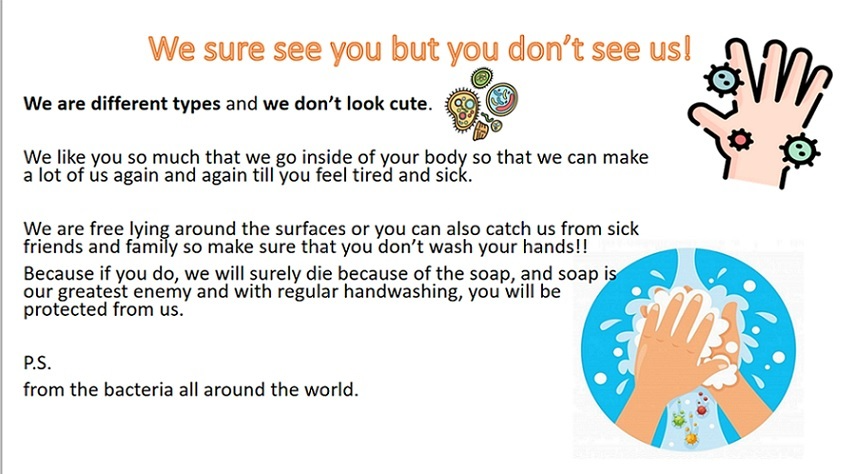
Glencoe Health
1st Edition
McGraw-Hill Education
ISBN: 9780078913280
Textbook solutions
Chapter 1: Understanding Health and Wellness
Section 1.1: Your Total Health
Section 1.2: What Affects Your Health?
Section 1.3: Health Risks and Your Behavior
Section 1.4: Promoting Health and Wellness
Page 28: Chapter 1 Assessment
Page 31: Math Practice
Page 31: Reading/Writing Practice
Chapter 2: Taking Charge of Your Health
Section 2.1: Building Health Skills
Section 2.2: Making Responsible Decisions and Setting Goals
Section 2.3: Being a Health-Literate Consumer
Section 2.4: Managing Consumer Problems
Page 56: Chapter 2 Assessment
Page 59: Reading/Writing Practice
Page 59: Math Practice
Chapter 3: Achieving Mental and Emotional Health
Section 3.1: Developing Your Self-Esteem
Section 3.2: Developing Personal Identity and Character
Section 3.3: Expressing Emotions in Healthful Ways
Page 86: Chapter 3 Assessment
Page 89: Reading/Writing Practice
Page 89: Math Practice
Chapter 4: Managing Stress and Coping with Loss
Section 4.1: Understanding Stress
Section 4.2: Managing Stress
Section 4.3: Coping with Loss and Grief
Page 108: Chapter 4 Assessment
Page 111: Reading/Writing Practice
Page 111: Math Practice
Chapter 5: Mental and Emotional Problems
Section 5.1: Dealing with Anxiety and Depression
Section 5.2: Mental Disorders
Section 5.3: Suicide Prevention
Section 5.4: Getting Help
Page 132: Chapter 5 Assessment
Page 135: Math Practice
Page 135: Reading/Writing Practice
Chapter 6: Skills for Healthy Relationships
Section 6.1: Foundations of a Healthy Relationship
Section 6.2: Respecting Yourself and Others
Section 6.3: Communicating Effectively
Page 160: Chapter 6 Assessment
Page 163: Reading/Writing Practice
Page 163: Math Practice
Chapter 7: Family Relationships
Section 7.1: Healthy Family Relationships
Section 7.2: Strengthening Family Relationships
Section 7.3: Help for Families
Page 186: Chapter 7 Assessment
Page 189: Reading/Writing Practice
Page 189: Math Practice
Chapter 8: Peer Relationships
Section 8.1: Safe and Healthy Friendships
Section 8.2: Peer Pressure and Refusal Skills
Section 8.3: Practicing Abstinence
Page 214: Chapter 8 Assessment
Page 217: Math Practice
Page 218: Reading/Writing Practice
Chapter 9: Resolving Conflicts and Preventing Violence
Section 9.1: Causes of Conflict
Section 9.2: Resolving Conflict
Section 9.3: Understanding Violence
Section 9.4: Preventing and Overcoming Abuse
Page 244: Chapter 9 Assessment
Page 247: Math Practice
Page 247: Reading/Writing Practice
Chapter 10: Nutrition for Health
Section 10.1: The Importance of Nutrition
Section 10.2: Nutrients
Section 10.3: Healthy Food Guidelines
Section 10.4: Nutrition Labels and Food Safety
Page 284: Chapter 10 Assessment
Page 287: Reading/Writing Practice
Page 287: Math Practice
Chapter 11: Managing Weight and Eating Behaviors
Section 11.1: Maintaining a Healthy Weight
Section 11.2: Body Image and Eating Disorders
Section 11.3: Lifelong Nutrition
Page 312: Chapter 11 Assessment
Page 315: Math Practice
Page 315: Reading/Writing Practice
Chapter 12: Physical Activity and Fitness
Section 12.1: Benefits of Physical Activity
Section 12.2: Improving Your Fitness
Section 12.3: Planning a Personal Activity Program
Section 12.4: Fitness Safety and Avoiding Injuries
Page 346: Chapter 12 Assessment
Page 349: Reading/Writing Practice
Page 349: Math Practice
Chapter 13: Personal Health Care
Section 13.1: Healthy Skin, Hair, and Nails
Section 13.2: Healthy Teeth and Mouth
Section 13.3: Healthy Eyes and Ears
Page 376: Chapter 13 Assessment
Page 379: Reading/Writing Practice
Page 379: Math Practice
Chapter 14: Skeletal, Muscular, and Nervous Systems
Section 14.1: The Skeletal System
Section 14.2: The Muscular System
Section 14.3: The Nervous System
Page 402: Chapter 14 Assessment
Page 405: Math Practice
Page 405: Reading/Writing Practice
Chapter 15: Cardiovascular, Respiratory, and Digestive Systems
Section 15.1: The Cardiovascular and Lymphatic Systems
Section 15.2: The Respiratory System
Section 15.3: The Digestive System
Section 15.4: The Excretory System
Page 436: Chapter 15 Assessment
Page 439: Math Practice
Page 439: Reading/Writing Practice
Chapter 16: Endocrine and Reproductive Health
Section 16.1: The Endocrine System
Section 16.2: The Male Reproductive System
Section 16.3: The Female Reproductive System
Page 460: Chapter 16 Assessment
Page 463: Reading/Writing Practice
Page 463: Math Practice
Chapter 17: The Beginning of the Life Cycle
Section 17.1: Prenatal Development and Care
Section 17.2: Heredity and Genetics
Section 17.3: Birth Through Childhood
Page 490: Chapter 17 Assessment
Page 493: Reading/Writing Practice
Page 493: Math Practice
Chapter 18: The Life Cycle Continues
Section 18.1: Changes During Adolescence
Section 18.2: Adulthood, Marriage, and Parenthood
Section 18.3: Health Through the Life Cycle
Page 514: Chapter 18 Assessment
Page 517: Math Practice
Page 517: Reading/Writing Practice
Chapter 19: Medicines and Drugs
Section 19.1: The Role of Medicines
Section 19.2: Using Medicines Safely
Page 536: Chapter 19 Assessment
Page 539: Reading/Writing Practice
Page 539: Math Practice
Chapter 20: Tobacco
Section 20.1: The Health Risks of Tobacco Use
Section 20.2: Choosing to Live Tobacco-Free
Section 20.3: Promoting a Smoke-Free Environment
Page 560: Chapter 20 Assessment
Page 563: Reading/Writing Practice
Page 563: Math Practice
Chapter 21: Alcohol
Section 21.1: The Health Risks of Alcohol Use
Section 21.2: Choosing to Live Alcohol-Free
Section 21.3: The Impact of Alcohol Abuse
Page 586: Chapter 21 Assessment
Page 589: Math Practice
Page 589: Reading/Writing Practice
Chapter 22: Illegal Drugs
Section 22.1: The Health Risks of Drug Use
Section 22.2: Marijuana, Inhalants, and Steroids
Section 22.3: Psychoactive Drugs
Section 22.4: Living Drug-Free
Page 618: Chapter 22 Assessment
Page 621: Math Practice
Page 621: Reading/Writing Practice
Chapter 23: Communicable Diseases
Section 23.1: Understanding Communicable Diseases
Section 23.2: Common Communicable Diseases
Section 23.3: Fighting Communicable Diseases
Section 23.4: Emerging Diseases and Pandemics
Page 652: Chapter 23 Assessment
Page 655: Reading/Writing Practice
Page 655: Math Practice
Chapter 24: Sexually Transmitted Diseases and HIV/AIDS
Section 24.1: Sexually Transmitted Diseases
Section 24.2: Preventing and Treating STDs
Section 24.3: HIV/AIDS
Section 24.4: Preventing and Treating HIV/AIDS
Page 682: Chapter 24 Assessment
Page 685: Math Practice
Page 685: Reading/Writing Practice
Chapter 25: Noncommunicable Diseases and Disabilities
Section 25.1: Cardiovascular Disease
Section 25.2: Cancer
Section 25.3: Allergies, Asthma, Diabetes, and Arthritis
Section 25.4: Physical and Mental Challenges
Page 716: Chapter 25 Assessment
Page 719: Reading/Writing Practice
Page 719: Math Practice
Chapter 26: Safety and Injury Prevention
Section 26.1: Personal Safety and Protection
Section 26.2: Safety at Home and in Your Community
Section 26.3: Outdoor Safety
Section 26.4: Safety on the Road
Page 752: Chapter 26 Assessment
Page 755: Math Practice
Page 755: Reading/Writing Practice
Chapter 27: First Aid and Emergencies
Section 27.1: Providing First Aid
Section 27.2: CPR and First Aid for Shock and Choking
Section 27.3: Responding to Other Common Emergencies
Section 27.4: Emergency Preparedness
Page 786: Chapter 27 Assessment
Page 789: Reading/Writing Practice
Page 789: Math Practice
Chapter 28: Community and Environmental Health
Section 28.1: Community and Public Health
Section 28.2: Air Quality and Health
Section 28.3: Protecting Land and Water
Page 814: Chapter 28 Assessment
Page 817: Reading/Writing Practice
Page 817: Math Practice
All Solutions
Section 23.2: Common Communicable Diseases
Exercise 1
Step 1
1 of 1
Common cold is a viral infection that causes inflammation of the mucus membrane.
Symptoms – Sneezing, sore throat, runny nose.
Cure – No medication. Body has to fight of the infection. Take plenty of liquids and rest.
Symptoms – Sneezing, sore throat, runny nose.
Cure – No medication. Body has to fight of the infection. Take plenty of liquids and rest.
Flu or influenza is a viral infection of the respiratory tract.
Symptoms – High fever, fatigue, headache, muscle ache and coughing.
Cure – Antiviral drugs may help in early stages. Mostly treated with proper nutrition, plenty of rest and lots of liquids.
Exercise 2
Step 1
1 of 1
1. Avoid close contacts with ill persons. If sick, stay home.
2. Wash hands often.
3. Avoid touching your eyes, nose and mouth often.
4. Eat right and physical activity to strengthen the immune system.
5. Abstain form smoking.
2. Wash hands often.
3. Avoid touching your eyes, nose and mouth often.
4. Eat right and physical activity to strengthen the immune system.
5. Abstain form smoking.
Exercise 3
Step 1
1 of 1
Hepatitis cannot be treated with antibiotics because hepatitis is caused by viral infection and antibiotics are used to treat infections caused by bacteria.
Exercise 4
Step 1
1 of 2
The respiratory tract connects the outside world to the inside of your body.
It could easily catch what is in the air by simply breathing thus making it at risk for infection
from bacteria and viruses.
It could easily catch what is in the air by simply breathing thus making it at risk for infection
from bacteria and viruses.
Result
2 of 2
The respiratory tract connects the outside world to the inside of your body. A direct pathway where bacteria and viruses can simply infect internally.
Exercise 5
Step 1
1 of 2
Illegal drug users have a high chance of contracting and spreading hepatitis thru sharing of the syringe injections or a needle that has been used even if it is only once.
Result
2 of 2
Thru sharing of the syringe injections or a needle that has been used by an infected individual to another.
Exercise 6
Step 1
1 of 1
Some of the reported communicable diseases and as indicated on the website are hepatitis B, HIV, influenza, and syphilis. Influenza is easily transmitted by air droplets and close contact with infected persons. It is caused by a different virus and affects the lower parts of the respiratory tract. Hepatitis B is transmitted by sexual contact, sharing of needles, and from the mother to the baby at birth. There is no specific treatment yet for acute hepatitis B. HIV is transmitted through sexual contact, needle sharing, and blood transfusions, and can then develop into AIDS which has no cure as of now. Syphilis is a sexually transmitted infection. One can get syphilis from sexual contact and from mother to baby. It is caused by Treponema pallidum bacteria and can be cured successfully particularly in the early stages.
Exercise 7
Step 1
1 of 1

Haven't found what you were looking for?
Search for samples, answers to your questions and flashcards

unlock
